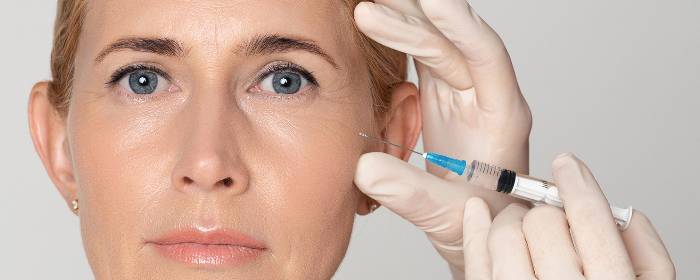
by admin | Sep 26, 2019 | Stem Cell Therapy
Reflex sympathetic dystrophy (RSD), now also known as Complex Regional Pain Syndrome (CRPS), is a condition that is thought to arise for a combination of reasons, but its etiology is not clear. People with the disorder experience changes to their skin, swelling, and bone loss. One hallmark of the condition is the experience of nonspecific pain that is sensitive to weather. Unfortunately, managing RSD is often difficult. Patients with RSD/CRPS may have a hard time walking because of pain and may need assistive devices.
Clinical management of RSD/CRPS often involves things like pharmaceutical medications and restorative therapies, but these strategies are limited in their effectiveness. As a result, most patients with RSD experience chronic pain and a lower quality of life than those without the disorder. A case report has described the innovative use of stem cells to treat a patient with Stage 3 RSD. The rationale for using stem cells against RSD is that stem cells have provided regenerative benefits in a variety of other disorders and are capable of promoting the generation of blood vessels, which can support healing.
The patient, who was a female Registered Nurse, had been experiencing pain in her left lower extremity after an operation aimed at fixing a complex fracture. Following the surgery, the patient had been suffering from nonspecific pain and was diagnosed with a form of RSD/CRPS. She subsequently underwent months of aggressive therapy, but the therapy failed in helping her to walk. Instead, she was left unable to bear weight on her left leg.
Given that the patient’s problems persistent despite conventional treatment options, the patient was given stem cell therapy. Specifically, cells were harvested from the bone marrow and grafted to the calf in the hopes that blood flow would be enhanced, and the symptoms would be eliminated. According to the author of the report, the results of this stem cell therapy were excellent.
After just 2 weeks, skin symptoms were already going away, as was the patient’s pain. Critically, the patient was also able to put some weight on her left leg. By 30 days post-procedure, she was able to rid herself of assistive walking devices. These results demonstrate the promise of stem cells to help with complex and difficult-to-manage medical conditions like RSD/CRPS. Further research will help to determine the best way that stem cells may be used to treat other RSD patients.
Reference: Schwartz, R.G. Stem cells for the treatment of complex regional pain syndrome (CRPS)/ reflex sympathetic dystrophy (RSD): A case study Pan American Journal of Medical Terminology, 1(2), 89-92.

by admin | Sep 24, 2019 | Adipose, Stem Cell Research, Stem Cell Therapy
Crohn’s disease is a chronic illness that can affect any part of the gastrointestinal tract but mostly affects the small and large intestines. People with Crohn’s disease often have inflammation of the large bowel (Crohn’s disease is an inflammatory bowel disease or IBD). This colitis causes abdominal pain, cramping, diarrhea, along with bleeding and infections in the gastrointestinal tract. Crohn’s disease can interfere with a person’s ability to absorb nutrients, leading to malnutrition and weight loss. The medical community is debating whether it is possible to treat experimental colitis with fat-derived stem cells.
The standard medical treatment for Crohn’s disease involves one or more powerful drugs. When the disease flares up, patients usually must take steroids either orally or intravenously. They may also receive disease-modifying therapy such as immunomodulators and biologic medications. Many patients do enjoy remission once they receive these powerful drugs; however, side effects can be difficult to tolerate. Patients who cannot tolerate these powerful drugs or do not achieve disease remission may have to take steroids every day. Chronic steroid use has many severe and sometimes permanent side effects. If these treatments fail, patients may need to have surgery to remove a portion of their intestines that have been damaged by Crohn’s disease.
In an effort to find safe and effective treatments for Crohn’s disease, researchers have been testing stem cells in laboratory animals. In one study, scientists used a chemical to cause colon inflammation (colitis) in mice. This chemical causes many of the symptoms of humans with Crohn’s disease experience such as diarrhea, tissue damage, and weight loss. The researchers then treated some of the mice with mesenchymal stem cells gathered from human fat tissue (adipose) to see if stem cells could improve the symptoms.
Remarkably, human stem cell treatment reduced diarrhea, inflammation, and disease severity in mice with colitis. The chemical colitis caused mice to lose approximately 15 to 20% of their body weight. Mice that received stem cell treatment regained most of the weight they had lost. Researchers also noted that mice treated with adipose-derived mesenchymal stem cells lived significantly longer than those that did not receive stem cell treatment.
Of course, this research was performed in laboratory animals, but it lays important groundwork for testing in humans. Indeed, since the publication of this report, researchers have been able to show that adipose-derived stem cells helped patients with Crohn’s disease. This exciting work will no doubt lead to future studies that may help pave the way to wider use of stem cells in the treatment of inflammatory bowel disease, such as Crohn’s disease.
Reference: Gonzalez, M. (2009). Adipose-Derived Mesenchymal Stem Cells Alleviate Experimental Colitis by Inhibiting Inflammatory and Autoimmune Responses. Gastroenterology. Volume 136, Issue 3, March 2009, Pages 978-989

by admin | Sep 20, 2019 | Parkinson's Disease, Progressive Supranuclear Palsy, Stem Cell Research, Stem Cell Therapy, Supranuclear Palsy
Progressive supranuclear palsy, also known as PSP, is a disorder of the brain that gets worse over time (progressive neurodegenerative disorder). Many progressive supranuclear palsy symptoms are similar to Parkinson’s disease. These include rigidity, slowness of movement, cognitive (thinking) problems, difficulty speaking, and difficulty swallowing. While people with Parkinson’s disease can have an unsteady gait and “freeze,” these symptoms are much more prominent in people with progressive supranuclear palsy. Likewise, people with PSP have a particular eye problem called supranuclear gaze palsy, which causes PSP patients to have difficulty moving their eyes in certain directions.
Despite the similarities between PSP and Parkinson’s disease, there are no treatments for progressive supranuclear palsy as they are for Parkinson’s disease. Drugs like levodopa help reduce tremors and rigidity in people with Parkinson’s, but they have been largely ineffective in people with PSP. Some PSP patients may benefit from drugs like levodopa, but most experience severe visual hallucinations or other side effects, which causes them to stop the medication. Because there are so few treatments, patients with progressive supranuclear palsy rely on supportive care measures such as occupational and physical therapy, nutritional support, and palliative care.
To address this critical need, researchers are testing mesenchymal stem cells for their ability to treat progressive supranuclear palsy. Dr. Margherita Canesi and her colleagues selected five patients with progressive supranuclear palsy. Her research team used bone marrow from healthy volunteers to select healthy mesenchymal stem cells. The researchers then infused the mesenchymal stem cells into patients in a single infusion.
While patients with PSP normally deteriorate rapidly, the patients who received a single stem cell treatment remained stable for at least six months after treatment. Some patients still maintained function at the end of the study (12 months). All patients tolerated the treatment well, there were no major side effects. While the study was small, it suggests that stem cell treatment was able to change the natural course of the disease. Based on these encouraging results, the authors have set their sights on a randomized, placebo-controlled phase 2 study to further test mesenchymal stem cell treatments in patients with progressive supranuclear palsy. We look forward to their results with great enthusiasm.
Reference: Canesi, M. et al. (2016). Finding a new therapeutic approach for no-option Parkinsonisms: mesenchymal stromal cells for progressive supranuclear palsy. Journal of Translational Medicine. 14, Article number: 127 (2016).

by admin | Sep 2, 2019 | Aesthetics, Stem Cell Therapy
No matter how young we may feel, our aging skin often gives our age away. As we age, we lose important proteins in the skin like collagen and elastin. We also lose a thin layer of fat that lies just below the skin. Without this fat and protein, the skin sags and loses its elasticity (“bounce back”) appearing thin and wrinkly.
One of the main skin rejuvenation techniques is to inject fat into aging skin. In its most basic form, a bit of fat is removed from the patient via liposuction and injected into an area of aging skin. These transplanted fat cells give the skin a plumper appearance and seem to turn back the clock on skin aging. However, mature fat cells do not last forever, and many people need to have repeated skin rejuvenation procedures to maintain the effect.
More recently, however, physicians have realized that they achieve better results when they include stem cells in their fat grafts. The mature fat cells provide a beauty benefit immediately, while stem cells help maintain the effect longer. Some physicians have taken the procedure so far as to only inject stem cells and remove mature fat cells completely. While this approach seems reasonable, is unclear whether the stem cell-only approach is actually superior.
While the benefit of fat grafts that include stem cells is widely known, it is unclear how the process works. By understanding the process, researchers hope to learn what provides the strongest antiaging effect. To help them better understand the skin rejuvenation process of fat-derived stem cells, researchers performed liposuction on several patients and then reinjected fat cells and stem cells into areas of aging skin. Three months later, the researchers took samples of the skin to see what effect the combination of fat cells and stem cells had on the skin structure.
While the specific results are quite complex, researchers found that a fat graft that included adipose-derived stem cells improved the elasticity of the skin by creating what is known as an “oxytalan elastic network.” These fibers helped to smooth out the skin and allowed it to retain more moisture than it did before skin rejuvenation treatment.
Perhaps most importantly for patients, the skin rejuvenation procedure left patients with fuller, younger-looking skin.
The researchers concluded that the most beneficial skin rejuvenation approach is to inject a combination of fat cells and stem cells derived from fatty tissue. The benefits were the same as those obtained by injecting stem cells alone. The researchers argue that the combination approach provides a good clinical benefit with the added benefits of being easier to perform, cheaper, and less prone to complications.
Reference: Charles-de-Sá, L. et al. (2015). Antiaging treatment of the facial skin by fat graft and adipose-derived stem cells. Plastic and Reconstructive Surgery. 2015 Apr;135(4):999-1009.

by admin | Aug 29, 2019 | Age Management, Mesenchymal Stem Cells, Stem Cell Therapy
Cognitive aging describes the changes to our ability to think, remember, and process information that occurs as we age. Cognitive aging begins in adulthood and progresses—if not accelerates—in old age. Over time, the speed at which we process information in the brain slows down, our ability to pay and maintain attention decreases, and we have a harder time making and recalling new memories. While some view cognitive aging as normal because it occurs in all of us, others acknowledge that cognitive aging is something that interferes with a person’s ability to function and diminishes the quality of life.
Currently, there are very few things that can slow cognitive aging and essentially nothing that can reverse it. Physical exercise, mental activity, and a healthful diet can modestly preserve cognitive function as we age. However, once aging occurs in the brain, there is nothing that we can do—currently—to change it.
Some innovative scientists are trying to change that, however. They are focusing on the changes in the brain that take place during aging and using stem cells to reverse that process.
A group of neuroscientists focused their efforts on memory and on the hippocampus, which is the main region of the brain that is responsible for memory. Researchers collected clinical-grade, mesenchymal stem cells taken from human umbilical cords and infused them into aging mice. Aging mice received stem cell treatment once every two weeks for several months.
After three months of treatment with umbilical cord-derived mesenchymal stem cells, mice showed significant improvement in learning and memory tests. Treated mice also had a remarkably improved function in the hippocampus. Surprisingly, stem cell treatment also created new brain cells (i.e. neurogenesis). Indeed, stem cell transplantation in aging mice actually reversed changes in the brain associated with cognitive aging.
These results were conducted in mice and not in humans, however, this research offers a strong foundation for conducting clinical human studies. If these improvements in memory and brain health could be shown in humans, it would be a groundbreaking study. Even in its current form, this research is an exciting breakthrough for the fields of stem cell medicine, neuroscience, and the neurobiology of cognitive aging. It suggests that mesenchymal stem cells may one day be able to reverse cognitive aging.
Reference: Cao N. et al. (2017). Clinical-grade human umbilical cord-derived mesenchymal stem cells reverse cognitive aging via improving synaptic plasticity and endogenous neurogenesis. 2017 Aug 10;8(8):e2996.

by admin | Aug 22, 2019 | Erectile Dysfunction, Stem Cell Therapy
The little blue pill brought erectile dysfunction from out of the shadows and into our shared awareness. Erectile dysfunction affects millions of men and, in turn, their sexual partners. The condition can undermine a man’s sense of self-worth, self-esteem, and masculinity. While the little blue pill has been instrumental in getting men with erectile dysfunction to ask their doctors about treatment, that same pill does not work for every man. Indeed, countless men fail to achieve successful erections even after taking oral erectile dysfunction medication.
In one of the first clinical studies of its kind, urologists at a medical practice in Florida tested the effects of mesenchymal stem cell treatments in men with erectile dysfunction. They selected eight men with erectile dysfunction who could not achieve erections even after oral medications. The men received mesenchymal stem cells that were derived from human placenta (also known as afterbirth). The urologists then followed the men for six months after treatment, testing blood flow, penile size, and erectile function.
The men treated with mesenchymal stem cells had a statistically significant increase in penile blood flow at six weeks, three months, and six months after treatment. Three men were able to achieve erections within three months of treatment without oral erectile dysfunction medication. After stem cell treatment, four other men were able to achieve erections with low-dose oral erectile dysfunction medication (which had previously been ineffective).
Importantly, the treatment was well-tolerated by all men in the study, which is an important milestone for continuing this research.
The study is potentially groundbreaking as it opens the door to larger clinical studies in men with erectile dysfunction. Indeed, nearly two dozen clinical trials are now studying the effects of stem cell treatment for erectile dysfunction. These early results are exciting, and offer hope to men with erectile dysfunction, especially those for whom oral medications have failed.
Reference: Levy, JA (2016). Determining the Feasibility of Managing Erectile Dysfunction in Humans With Placental-Derived Stem Cells. The Journal of the American Osteopathic Association. 2016 Jan;116(1):e1-5.







 St. Petersburg, Florida
St. Petersburg, Florida
